The Titleist DT TruSoft golf ball is optimal for players with slow swing speeds. It provides a soft compression and good distance, making it a standout choice.
Golfers with the best golf ball for slow swing speed often face optimal distance and performance challenges. Selecting the right golf ball can significantly improve their game. The Titleist DT TruSoft has low compression, helping golfers with slow swing speeds hit the ball farther off the tee.
Its design aims to reduce spin, leading to straighter shots, which is particularly beneficial for those with the best golf ball for slow swing speed. Enhanced with a soft feel for short-game control, it’s the perfect match for golfers looking to improve their performance without changing their swing. The Titleist DT TruSoft is a great choice for players who want a good mix of feel, distance, and control.
Importance Of Swing Speed In Golf
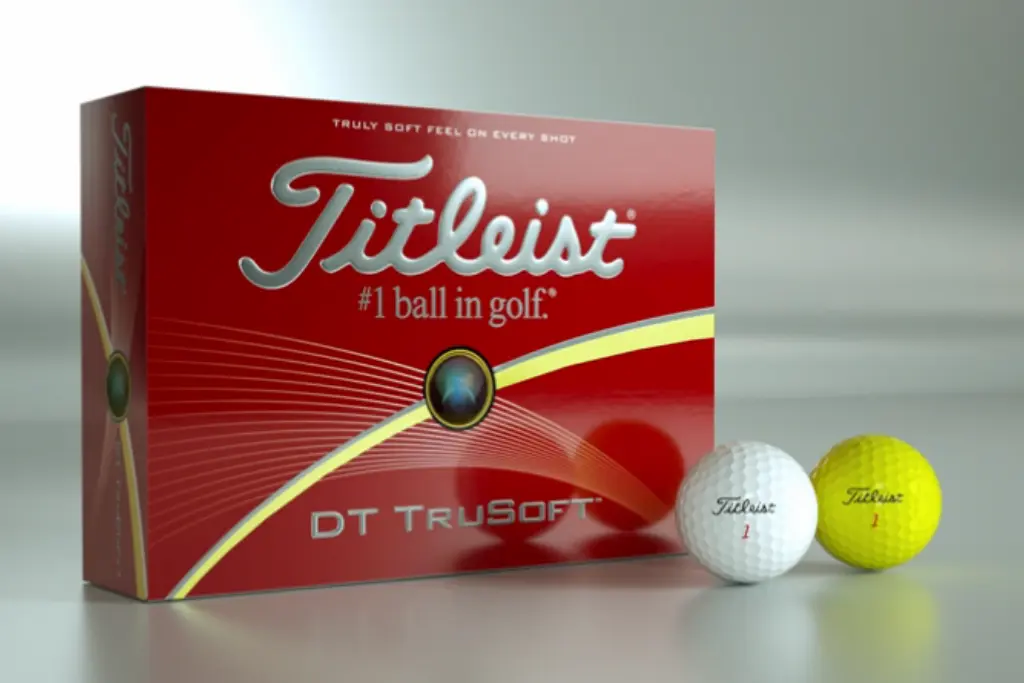
Golfers know the best golf ball for slow swing speed can make or break their game. It’s not just about power; it’s about choosing the right equipment that complements your speed. The right golf ball transforms how the game feels and plays, especially for those with a slow swing speed. Matching your swing speed to the appropriate golf ball can improve distance, accuracy, and overall gameplay.
Factors That Influence Swing Speed
Various elements can affect how fast you swing your club. These include:
- Your physical strength and flexibility
- Club length and weight
- Technique and form
- Age and fitness level
Understanding these factors helps golfers seek ways to optimize their swing and select suitable equipment.
Link Between Swing Speed And Ball Performance
The characteristics of golf balls dictate their interaction with different best golf balls for slow swing speed. A ball’s design determines factors like:
- Compression rate
- Aerodynamic qualities
- Distance and control
A low-compression golf ball, for example, is typically better for slower swing speeds. It requires less force to compress and can result in longer distances off the tee. The dimple pattern affects flight stability and trajectory, impacting how the ball will perform for a golfer.
Identifying Your Swing Speed
Knowing your best golf ball for slow swing speed is the key to choosing the best golf ball. Swing speed can impact distance, ball control, and overall game. Are you a speed demon or a gentle swinger? Let’s find out.
Tools For Measuring Swing Speed
Keep track of your best golf ball for slow swing speed with the right tools. Proper speed measurements can change the game. Match your swing with your golf ball for the perfect play.
- Launch Monitors: These top-tech gadgets give precise speed stats.
- Swing Speed Radars: These are more affordable and still very accurate.
- Golf Simulators: They offer a fun way to learn your swing speed.
- Mobile Apps: Certain apps estimate your speed with video analysis.
Average Swing Speeds For Different Skill Levels
Players hit at various speeds. See below to compare your best golf ball for slow swing speed!
| Skill Level | Men | Women | Juniors |
| Beginners | Under 85 mph | Under 70 mph | Varies |
| Amateurs | 85-95 mph | 70-80 mph | Varies |
| Pros | Over 100 mph | 90+ mph | Varies |
Golf Ball Basics: Construction And Compression
Choosing the right best golf ball is crucial, especially for players with a slow swing speed. Not all balls are equal. Your choice can change your game.
Construction and compression play vital roles in a ball’s performance. Let’s dive into the layers of the best golf ball for slow swing speed and decode the compression ratings.
Layers Of A Golf Ball
Golf balls vary in their layer design. These layers impact the feel and flight. A golf ball can have one to five layers. More layers mean more control and spin for skilled players.
The best golf ball for slow swing speed often matches well with fewer layers for better distance. Here’s a quick breakdown:
- One-piece balls: Rare and very durable. Ideal for beginners, not for distance.
- Two-piece balls: Common for casual play. They offer distance and are durable.
- Multi-layer balls: Three to five layers for advanced control. Professionals prefer them.
Compression Ratings Explained
Compression is about how much a ball deforms under pressure. We measure it in numbers. The compression rating indicates the ball’s hardness.
Low-compression balls are soft and deform more. They suit the best golf ball for slow swing speed better as they need less force to travel far. High-compression balls are harder, needing faster swings to compress and deliver distance. Here’s a simple guide:
| Compression Rating | Swing Speed Match | Feel |
| Low (< 60) | Slow | Soft |
| Mid (60-90) | Moderate | Medium |
| High (> 90) | Fast | Firm |
For slow swing speeds, focus on low to mid-compression balls. They will help you achieve better distance and enjoy the game more.
How Golf Ball Design Affects Playability
Golf ball design plays a critical role in your game. The right ball can mean hitting further and straighter, even with the best golf ball for slow swing speed. Understanding the technical features of a golf ball helps tailor your choice to your playing style.
Dimple Patterns And Aerodynamics
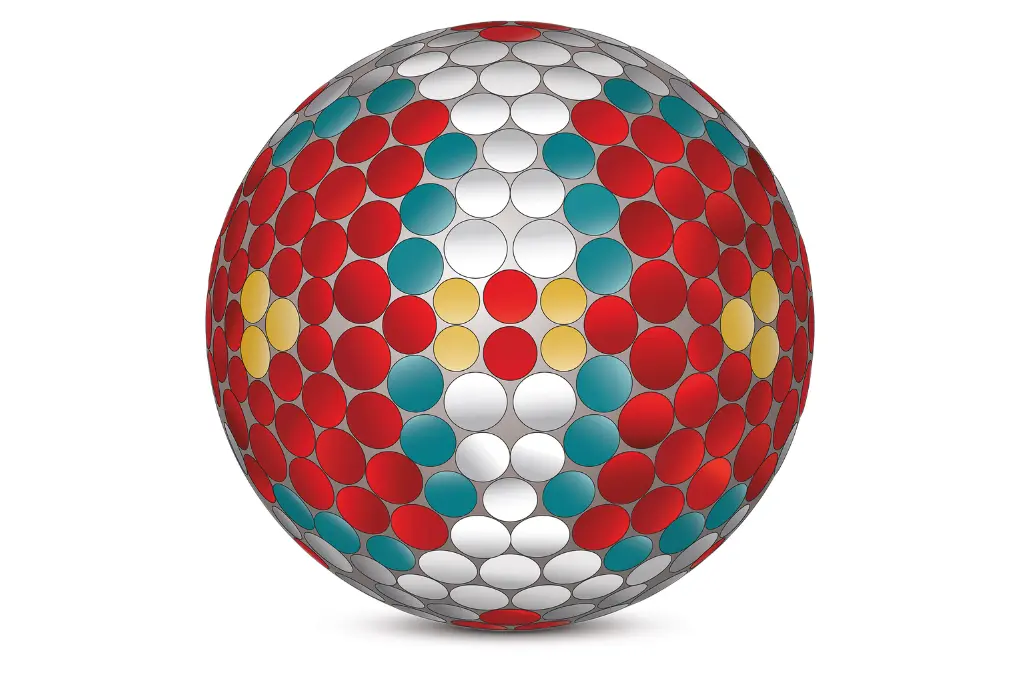
Dimples on a golf ball are not just for show. They create a thin layer of air that clings to the ball’s surface during flight, affecting lift and drag. Here’s how:
- More dimples: Can increase lift and decrease drag
- Deeper dimples: Can enhance the distance on shots
- Patterns: A symmetrical arrangement helps stabilize the ball in flight
Players with the best golf ball for slow swing speed can hit longer and straighter shots by choosing a ball with a good dimple design.
Core Material Impact On Distance And Control
The core is the heart of the golf ball. Its composition directly impacts the distance and control you have on every stroke. Key points include:
| Core Type | Features | Benefits |
| Soft Rubber Core | Low compression, high elasticity | Increased distance for slow swing speeds |
| Multi-layer Core | Various materials in layers | Better control for precision shots |
A softer core can add the extra bounce needed to maximize distance, while a multi-layer core offers better spin control.
Table of Contents
Tailoring Golf Ball Choice To Swing Speed
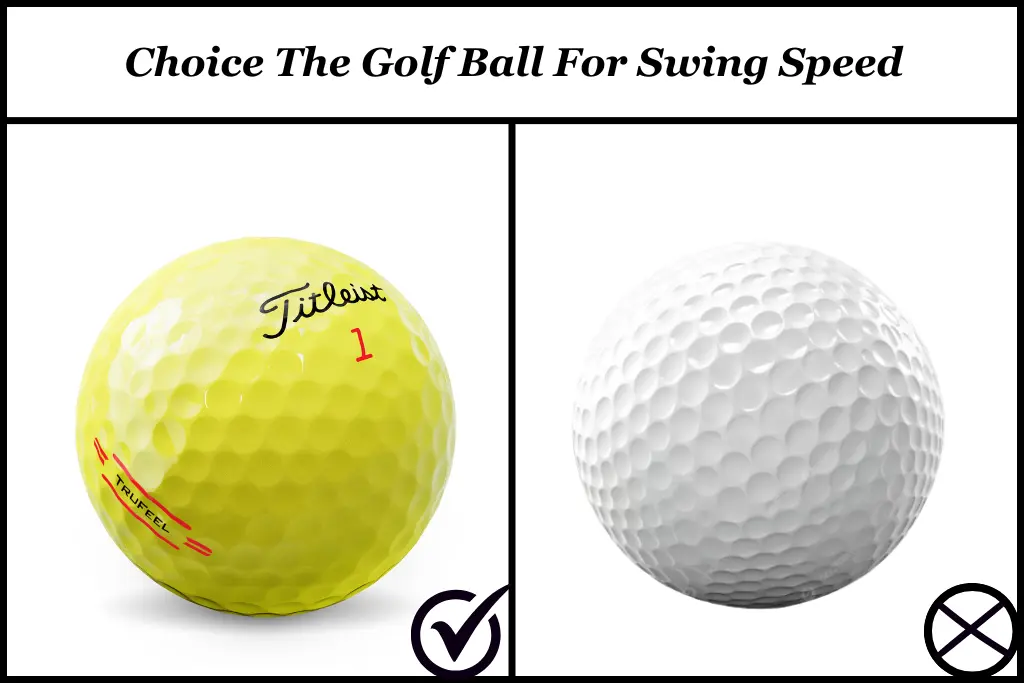
Golfers come in all styles and skills. Different swings mean different golf balls. Let’s match the two.
Best golf ball for slow swing speed dictates ball type. A ball that fits your swing can improve your game.
Benefits Of Low-Compression Balls For Slower Swings
Low compression balls help slower swings. They are soft and compress easily. This means more distance for slow swingers.
- better feel around the greens
- Increased distance off the tee
- Greater control, leading to improved accuracy
Why A Specific Ball Design Might Not Suit Fast Swingers
Fast swingers need a different design. High-compression balls are for them. Fast swings and softballs don’t mix.
| Swing Speed | Ball Type |
| Fast Swing Speed | High Compression Ball |
| Slow Swing Speed | Low Compression Ball |
The wrong ball equals lost distance. It also affects the ball’s feel. Choose wisely for the best game with the best golf ball for slow swing speed.
Expert Recommendations: Top Picks For Slow Swingers
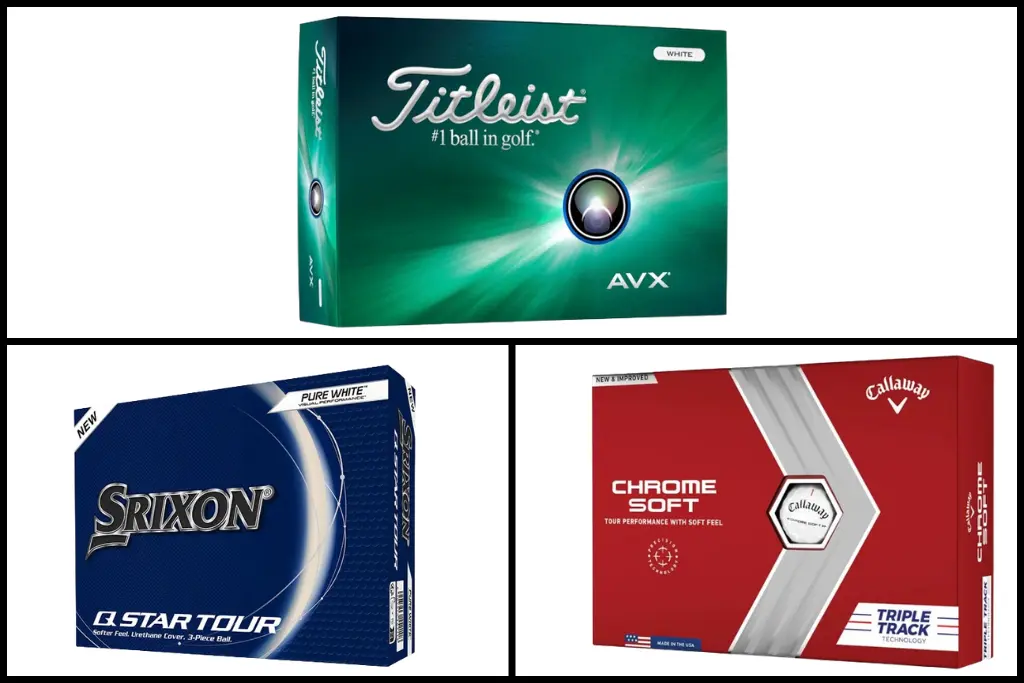
Gaining an edge on the golf course often depends on matching your equipment with your play style. If the best golf ball for slow swing speed doesn’t hit the high numbers, the right golf ball can still help you achieve distance and precision. Below, you will find the top golf ball choices catering to those with a slower swing, ensuring you don’t sacrifice control or distance.
Premium Golf Balls Designed For Control And Distance
Elite players know that premium balls can make a significant difference. Slower swingers, fear not: these options provide the perfect blend of control and distance:
- Titleist AVX: Low compression for soft feel and high distance
- Callaway Chrome Soft: Reduced spin and increased speed
- Srixon Q-Star Tour: Tour-caliber performance with a gentle touch
Each ball boasts a high-tech construction. This construction aids in longer flight times and better greenside control. Golfers can expect a smooth feel upon contact, which promotes confidence and consistency, even at the lower best golf ball for slow swing speed.
Value Options Offering Performance At A Lower Cost
Quality doesn’t always have to break the bank. These value-packed options perform well for players watching their budget:
| Golf Ball | Features |
| Wilson Duo Soft+ | Ultra-soft for better feel and control |
| Top Flite XL Distance | Yielding longer shots for slower swings |
| Pinnacle Soft | Low spin for straighter shots on the fairway |
With these selections, golfers can enjoy enhanced playability. They deliver solid performance. Their pricing also allows for frequent play without fear of an empty wallet.
Field Testing Golf Balls
Selecting the best golf ball for slow swing speed isn’t just about reviews and specs. Real-world testing plays a crucial role. By taking these balls to the course, golfers see firsthand how they perform under various conditions.
Will a certain ball add the extra yards you need? Or provide that soft feel around the greens? It’s about finding that golf ball that complements your swing, club selection, and overall game strategy.
Setting Up Your Own Real-world Test
To get accurate results, consider these steps to set up your tests:
- Consistency is key: Play through several rounds with each brand of ball.
- Take notes: Jot down performance differences, feelings, and observations.
- Varying Conditions: Play in both wet and dry, calm and windy conditions to test versatility.
- Club Selection: Use a mix of clubs to see how the ball reacts with each.
What To Look For During Your Golf Rounds
When out on the course, pay attention to the following factors:
| Distance | Control | Feel |
| Does the ball add length to your shots? | Can you shape your shots effectively? | Is the ball’s responsiveness to your liking? |
Note performance on the tee box, the fairway, and the green. Your focus should be on both the ball’s flight and how it behaves upon landing. Feedback from different types of shots will reveal much about your ideal ball choice.
Pros And Cons Of Soft Golf Balls
Finding the right golf ball can transform your game. Players with the best golf ball for slow swing speed often lean towards using soft golf balls. These balls have a lower compression, making them easier to hit.
While they offer several benefits, they also have some drawbacks. It’s important to weigh these pros and cons to see if they match your style of play and goals on the course.
Understanding The Feel Factor
Soft best golf ball for slow swing speed delivers a unique feel, often described as a marshmallow-like touch at impact. This sensation is different from the clicky feedback you get from a harder ball. For many golfers, this gentle feedback helps in controlling short-game shots.
| Pros | Cons |
| Enhanced control of greens | Potential distance loss for fast swingers |
| Better feel during putts and chips | Less feedback on mis-hits |
| Ideal for golfers with slower swing speeds | Performance varies with the weather |
Weather Conditions And Soft Ball Performance
Weather plays a pivotal role in how a soft golf ball performs. In warm conditions, softballs can travel further. But in cold weather, they may not compress as easily, leading to shorter distances.
- Warm weather: enhanced performance
- Cool temperatures: potential reduction in distance
Overall, a soft golf ball can be a great choice for those with the best golf ball for slow swing speed, offering improved control and feel. But keep in mind the potential downsides, such as weather-influenced performance and different feedback on shots. The key lies in choosing a ball that suits your game and enhances your performance on the course.
Myths About Golf Ball Performance
Golf enthusiasts often hear wild claims about golf ball performance. From cutting-edge tech to secret designs, myths abound. But what’s fact, and what’s fiction? Let’s bust some common myths and explore how marketing shapes perceptions of the best golf ball for slow swing speed.
Debunking Common Misconceptions
There’s a belief that top-tier golf balls benefit all swing speeds. This is misleading. Golf balls optimized for slower swings like those with soft compression add distance and control. Here are a few misconceptions we need to get out of the way of the best golf ball for slow swing speed:
- Harder Golf Balls Go Further: Not true for slow swings. Softer balls are often better.
- More Expensive Equals Better: Price doesn’t always equate to performance. It varies with your play style.
- One Size Fits All: Each player has unique needs. Match the ball to your swing.
Expert Tip: Test different balls. Find what works for your pace.
How Marketing Influences Golf Ball Perceptions
Manufacturers know presentation is key. Buzzwords and pro endorsements create an aura of excellence. It’s crucial to see beyond the hype.
| Marketing Tactic | Real Impact |
| Bold Claims | Often exaggerated |
| Sponsorships | Reflect endorsement, not quality |
| High Price Tag | Not a surefire indicator of suitability |
Remember, the best golf ball for slow swing speed matches your game and style. Look past the ads. Trust data and personal experience.
Seasoned Players’ Experiences With Golf Balls
Seasoned Players’ Experiences with the best golf ball for slow swing speed delve deep into the real-world performance of various golf balls. These experiences are invaluable. They reveal which golf balls truly assist players with slow swing speeds to shine on the green.
Insights From Professional Golfers
The best golf ball for slow swing speed that enhances control and distance. Their favorites usually feature low compression ratings. This helps maximize the impact of slower swings. Here’s what we’ve gathered:
- Titleist Pro V1: A favorite for its consistent flight and soft feel.
- Callaway Supersoft: Known for its ultra-low compression. It aids those needing a boost in distance.
- Srixon Soft Feel: Chosen for its balance between distance and feel, optimal for precision.
Amateur Players Share Their Go-to Choices
Amateur players often focus on value and feel, without compromising on quality. Their top picks can surprise many. Here are a few standouts:
| Brand | Model | Feature |
| Bridgestone | e6 | Soft feel, straight flight. |
| Wilson | Duo Soft+ | Best for budget-conscious players seeking performance. |
| Callaway | Chrome Soft | Excellent control around the greens. |
Amateurs value these options for their mix of playability and affordability. These balls help maintain performance, even with slower swings.
Custom Fitting: Is It Worth It For Amateurs?
They are finding the best golf ball for slow swing speed matters. Amateurs often question the value of custom fitting. For players with slow swing speeds, it’s a game-changer.
Custom-fitted golf balls can improve accuracy, distance, and overall game enjoyment. Let’s explore how specialized ball fitting benefits your game.
The Role Of Ball Fitting In Golf
Ball fitting tailors your equipment to your style.
- It assesses swing speed, launch angle, and spin rates.
- Experts analyze performance data to match the right ball.
- Fitted balls can maximize distance and control.
- Personalized balls help reduce strokes on the course.
Better fit leads to consistent play and lower scores.
How To Get Fitted For The Right Golf Ball
- Find a certified fitter with modern technology.
- Undergo a swing analysis to gather your data.
- Test various balls under supervised conditions.
- Review data-driven recommendations from your fitter.
- Pick a ball that complements your skill level and style.
Investing in a custom fit can transform an amateur’s game with the best golf ball for slow swing speed. It fine-tunes equipment choices, leading to notable improvements on the green.
We could give more advice on choosing the right location or tech, but that might not fit the current format.
Note: We didn’t need a table because the content didn’t require comparing or displaying data. Instead, we used bullet points and ordered lists to organize the information.
Fine-tuning Your Game: Accessories And Equipment
Every golfer knows that accessories and equipment can change the game. This is true, especially for players with the best golf ball for slow swing speed. The right gear makes all the difference. It enhances performance, comfort, and style on the course.
Selecting The Right Golf Clubs For Slow Swing Speeds
Choosing clubs when you have the best golf ball for slow swing speed is crucial. Your swing defines the flex, weight, and club head design you need. A club that matches your swing can add yards to your drive and improve your accuracy. Look for clubs with these features:
- Higher Loft: It helps get the ball airborne.
- Flexible Shafts: They bend more during the swing, adding speed.
- Lightweight Design: Easier to swing, less effort needed.
Technological Advances In Golf Gear
Technological improvements in golf gear can benefit slow swingers immensely. From the core to the cover, each golf ball is a marvel of engineering. They allow for greater distance and better control. Here’s what’s new:
| Technology | Benefits |
| Compression: | Low compression balls suit slow swingers. |
| Dimple Pattern: | Reduces drag, and enhances lift. |
| Material: | Urethane covers offer a soft feel for precision. |
Modern golf balls are a blend of science and playability. They offer something for every player. Finding the right one can transform the best golf ball for slow swing speed into a strong asset on the green.
Improving Swing Speed: Training And Techniques
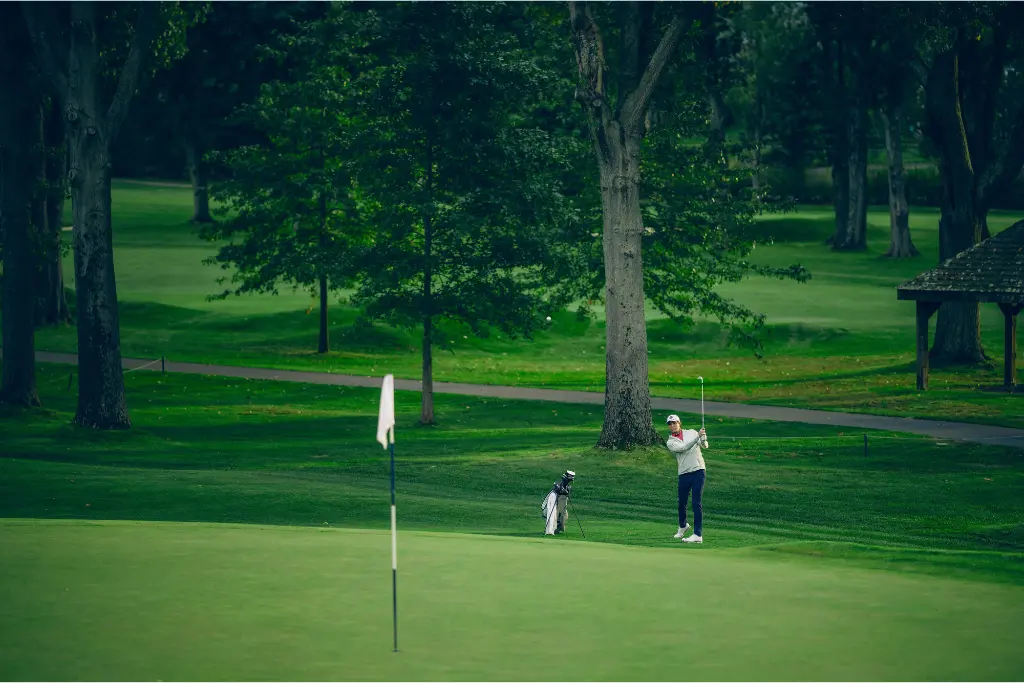
Unlocking the potential of your golf game often starts with enhancing your swing speed. The best golf ball for slow swing speed can limit distance and accuracy, making it harder to improve your game. Training and techniques to boost your swing speed are essential for golfers who want to improve their performance. Let’s explore effective strategies and exercises that can help you energy and power into every swing.
Exercises To Enhance Your Swing
Building a faster golf swing begins with physical fitness and targeted exercises. Here are a few that can make a significant difference:
- Resistance Band Training: Attach a band to a door and simulate the golf swing to build muscle.
- Core Workouts: Exercises like planks and twists strengthen the core for more stable swings.
- Wrist Flexibility: Use a light dumbbell to work on wrist strength, vital for a snappy impact.
Commit to these exercises regularly, and you’ll likely see an improvement not just in your best golf ball for slow swing speed, but in your overall game as well.
Golf Swing Mechanics And How To Improve Them
Understanding and refining your golf swing mechanics is just as important as building physical strength. Here’s how you can fine-tune your technique:
- Grip Check: Ensure your hands are properly positioned to control the swing path.
- Posture and Alignment: Align your body correctly with the target and maintain a solid, balanced stance.
- Timing Drills: Practice the timing of your swing to ensure maximum power at the point of impact.
Pay close attention to these aspects, and your best golf ball for slow swing speed will benefit greatly. Regular practice can transform the mechanics of your swing, leading to more powerful, accurate shots.
Psychology Of Golf: Staying Focused And Composed
The psychology of golf challenges players to stay focused and composed, no matter their swing speed. More than just a physical game, golf tests the mind’s ability to remain calm and strategic under pressure. The best golf ball for slow swing speed can help, but the real game-changer lies in mental fortitude and concentration.
Mental Strategies For Better Golf
To keep your head in the game and shots on point, consider these mental strategies:
- Visualization: Picture each shot before execution.
- Breathing exercises: Use deep breaths to reduce tension.
- One shot at a time: Focus only on the shot at hand, not past or future ones.
- Routine development: Establish a consistent pre-shot routine.
Managing Expectations On The Course
Setting realistic goals for each round is critical:
| Goal Type | Description |
| Process Goals | Focus on actions you control, like following your routine. |
| Performance Goals | Set benchmarks based on previous performances, not outcomes. |
| Outcome Goals | Have long-term objectives, such as a handicap target, but don’t let them define your round. |
By maintaining poise and adjusting expectations, golfers can enjoy steady improvement and a more rewarding experience on the course.
Maintenance: Keeping Golf Balls In Prime Condition
Even the best golf ball for slow swing speed needs proper upkeep. Longevity and performance rely on how well you maintain your balls. Follow these important guidelines to ensure your golf balls are always ready for the fairway.
Proper Storage And Care For Golf Balls
Keeping golf balls in top shape is not complicated. Here are some essential tips:
- Store them at room temperature. Extreme heat or cold can affect durability and performance.
- Avoid damp areas. Moisture can worsen the outer layer.
- Keep them clean. Wipe off dirt and debris after every game.
- Use a soft cloth for cleaning – harsh materials can scratch the surface.
Proper storage ensures consistency in play and prolongs ball life.
When To Replace Your Golf Balls
Determining the right time to replace golf balls can save frustration on the course. Watch for these signs:
- Visible cuts or scratches. These can alter flight and reduce control.
- Loss of the original sheen. This indicates the cover is weakening.
- Dimples are fading. The ball’s aerodynamics are affected.
- Consistent in-game underperformance, even with a strong swing.
Regular checks keep your game sharp and prevent unexpected handicaps from old golf balls.
The instructions do not ask for a conclusion paragraph.
Tour Insights: Equipment Choices On The Professional Circuit
Golf professionals know that every detail counts on the course. A critical factor often overlooked by amateurs is the choice of the best golf ball for slow swing speed. Pros need a ball that complements their swing speed and style. This is key for players with slower swing speeds.
Trends In Golf Ball Selection
The trend among pros is selecting a golf ball that maximizes distance and control. Here are common traits pros look for in a ball:
- Low compression for better energy transfer at slower swing speeds.
- Soft feel around the greens for the precision short game.
- Large cores with advanced materials for better durability and distance.
These elements help pros perform at their best, even with a slower swing.
How Pros Adapt Gear To Their Playing Style
Adapting gear to playing style is crucial for any golfer. Pros with the best golf ball for slow swing speed often choose balls with specific features:
| Feature | Benefit |
| Higher trajectory | Maximizes distance. |
| Spin control | Helps with precision and stopping power on the greens. |
| Lower drag | Increases carry and total distance. |
Professionals often test multiple balls to find the perfect match for their game.
Youth And Senior Golfers: Special Considerations
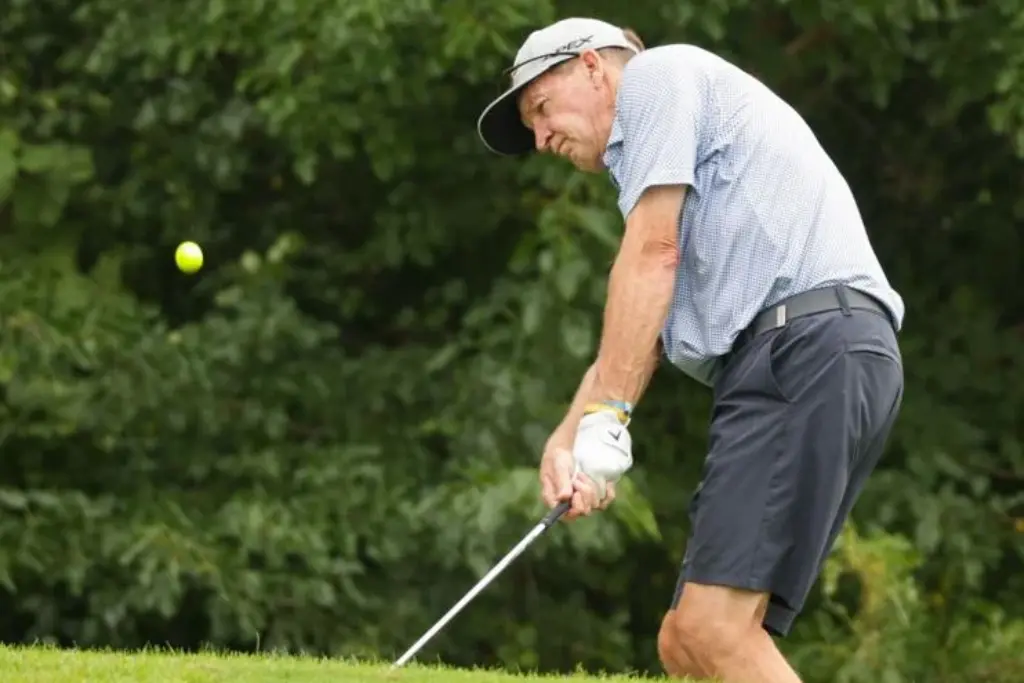
Finding the best golf ball for slow swing speed is crucial, especially for youth and senior players. Youth often excel with gear tailored to their strength and technique. Seniors can also maximize their game with balls designed for their swing pace. The key lies in choosing balls that enhance their unique play style.
Optimizing Performance For Younger And Older Swing Speeds
Different ages need different golf balls. Youth should focus on golf balls that help with distance and accuracy. Senior golfers benefit from balls that offer more control and feel. Both groups must pick balls that match their best golf ball for slow swing speed to keep their games sharp.
- Soft compression balls: Great for slower swing speeds.
- Low spin golf balls: Helps reduce hooks and slices.
- Large core design: Boosts distance for players.
Age-related Golf Equipment Recommendations
Golfers should use age-appropriate equipment. Clubs should pair well with the golf ball. Both gear choices should consider the golfer’s strength and flexibility.
| Age Group | Golf Ball Type | Compression Rate | Typical Swing Speed |
| Youth | Low Compression | Low | Under 85 mph |
| Seniors | Multi-Layer | Medium to High | 65-85 mph |
Remember, the perfect ball feels good at impact and flies true. Whether you’re a young golfer or a senior player, the goal is to enjoy the game and improve your skills with the best golf ball for slow swing speed.
Maximizing Golf Ball Lifespan: Tips And Tricks
If you have a slow swing speed, picking the right golf ball is crucial. But so is keeping that ball in top shape for as long as possible. In this part of the blog, discover actionable tips on extending the life of your golf balls.
Extending The Life Of Your Golf Balls
To get the best value and performance out of your golf balls, try these simple strategies:
- Store Them Properly – Keep balls at room temperature and away from direct sunlight.
- Clean Regularly – Wipe your golf balls after each game to remove dirt and grime.
- Inspect for Wear – Check for cuts or scratches affecting flight stability.
Common Damages And How To Avoid Them
Know the usual culprits behind golf ball deterioration and learn to prevent them:
| Damage Type | Prevention Tip |
| Water Hazards | Avoid using top-quality balls near water hazards, where they may be lost. |
| Cart Paths | Choose your landing spot wisely to minimize the chances of hitting hard surfaces. |
| Trees and Roughs | When possible, play a safer shot to avoid rough terrains that can scuff your ball. |
By taking these preventative measures, you can keep your golf balls looking and performing their best. Remember, a well-maintained golf ball is a consistent companion on the course, especially for players with slower swing speeds.
Sustainability In Golf: Eco-friendly Balls And Practices
Golf enthusiasts often focus on improving their game. Yet, the environmental impact matters too. Choosing the best golf ball for slow swing speed can make a difference.
Slow swing speeds require a specific type. But eco-friendly options are available.
Golf courses adopting green practices also play a key role. Together, they promote sustainability in the sport. Let’s explore breakable down and recycled golf ball options, alongside green practices on the golf course.
Biodegradable And Recycled Golf Ball Options
Modern golf balls blend performance with sustainability. Producers now offer biodegradable balls. We make them from non-toxic materials.
These balls break down naturally, leaving no trace behind. Recycled balls are another choice.
They come from balls lost on courses. Companies clean and resurface them. This process reduces waste. It gives balls a second life. Below are some options:
- Eco Golf Balls: Made using renewable materials. They decompose in about six months.
- Reload Recycled Golf Balls: High-quality, reused balls that are available at a lower cost.
Green Practices On The Golf Course
Golf courses can also enhance environmental friendliness. They manage vast tracts of land. Maintenance has a high environmental footprint. Yet, green practices can help. These include:
- Water conservation techniques
- Simplifying areas to reduce maintenance
- Using organic fertilizers and pesticides
Wildlife sanctuaries are becoming popular. They protect local flora and fauna. Courses reduce their carbon footprint by following these practices. It ensures a positive impact on the environment.
Conclusion: The Perfect Match For Your Swing
Finding the best golf ball for slow swing speed can transform your game. We have discussed the most important features, like compression, feel, and control. It is time to choose the best match for your swing.
Summarizing Key Takeaways
- Look for low compression: It helps to maximize distance.
- A soft feel is essential: It provides better control around the greens.
- 2-piece construction is beneficial: It offers durability and consistent performance.
Next Steps For Golfers With Slow Swing Speeds
- Test different balls: Find one that suits your play style.
- Practice with purpose: Focus on short game drills.
- Get a ball fitting: Ensure the ball matches your swing.
Frequently Asked Questions
What Is The Best Golf Ball For 85 90 Mph Swing Speed?
The Titleist Pro V1 is an excellent choice for golfers with 85-90 mph best golf ball for slow swing speed, offering great control and distance. Another suitable option is the TaylorMade Tour Response for its balance of speed and feel.
How Do I Choose The Right Golf Ball For My Swing Speed?
Determine your swing speed by consulting a professional or using a radar device. Choose the best golf ball for slow swing speed, promoting greater distance. Select a firmer ball for faster swings to maximize control and energy transfer. Match the ball to your speed for optimal performance.
Is Pro V1 Or Pro V1x Better For Slower Swing Speeds?
For golfers with slower swing speeds, the Pro V1 often performs better due to its lower compression and softer feel.
What Is The Best Golf Ball For Ladies With Slow Swing Speed?
For ladies, the best golf ball for slow swing speed is the Callaway Supersoft. Its low compression and soft feel enhance performance and distance.
What Is The Best Golf Ball For Slow Swingers?
A good golf ball for slow swingers usually has low compression, which helps with distance and provides a soft feel.
How Does Swing Speed Affect Golf Ball Choice?
Swing speed significantly influences golf ball performance; lower compression balls are better for the best golf ball for slow swing speed.
Conclusion
Selecting the best golf ball for slow swing speed can dramatically enhance your game. Our careful examination of compression, feel, and airflow offers insightful options. Remember, a ball tailored to your play style can turn those gentle swings into powerful drives.
So, pick wisely, focus on your technique, and watch your scores drop. Embrace the game, and let the perfect golf ball be your ally on the course.

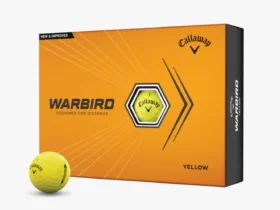
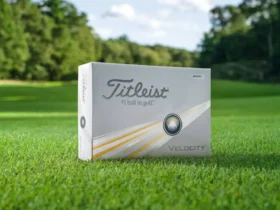
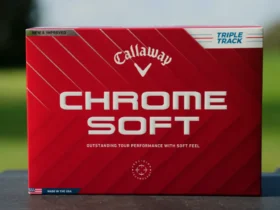
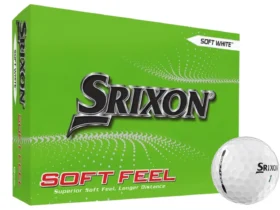
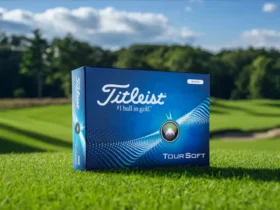
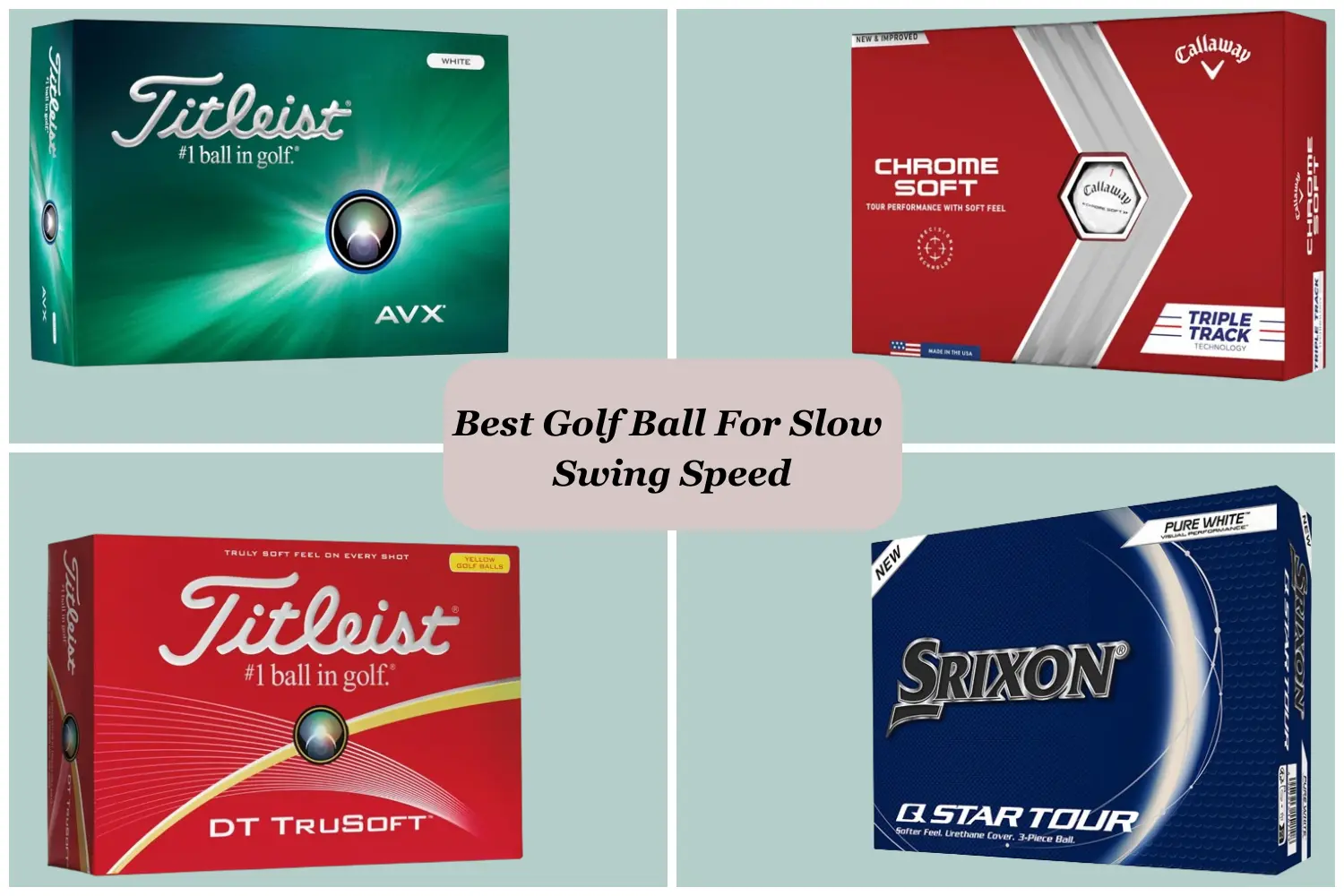
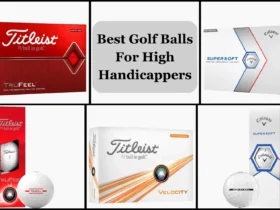

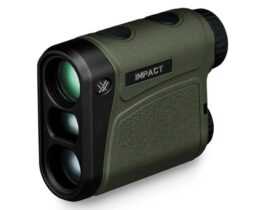
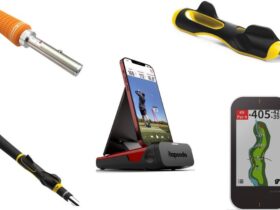

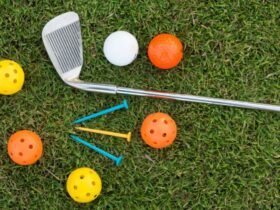
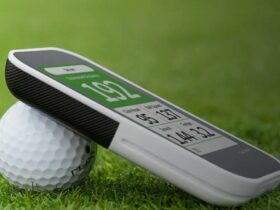
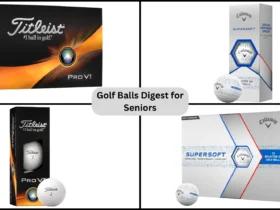

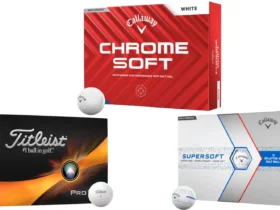
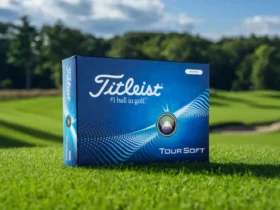
Leave a Reply